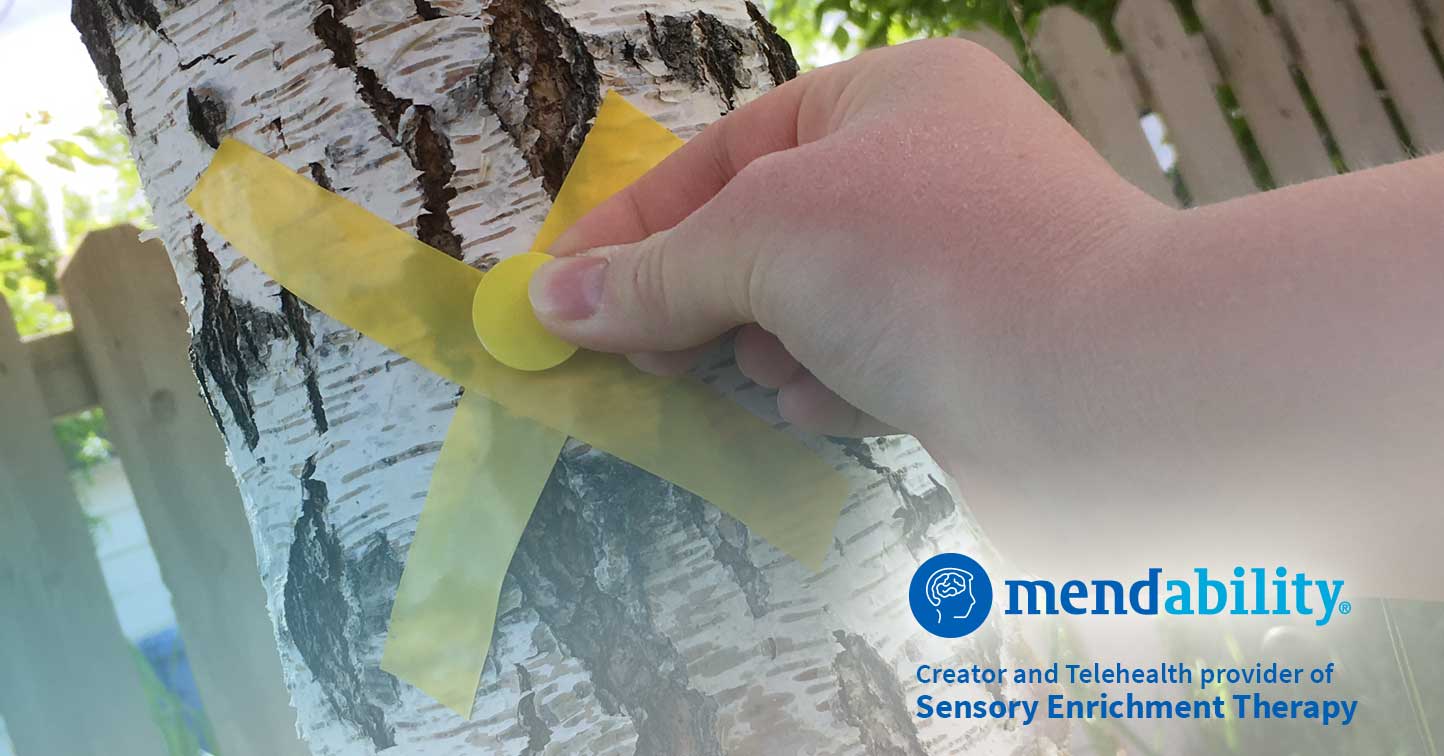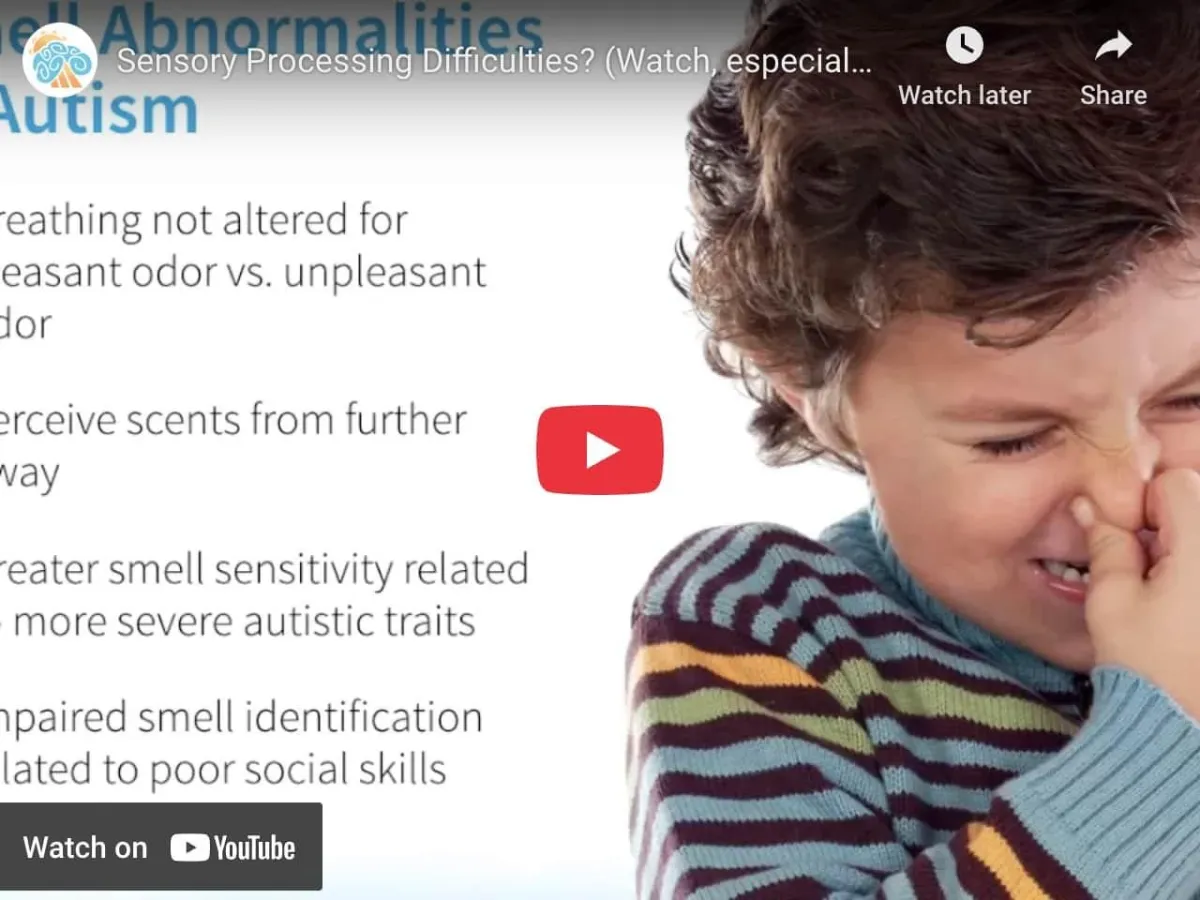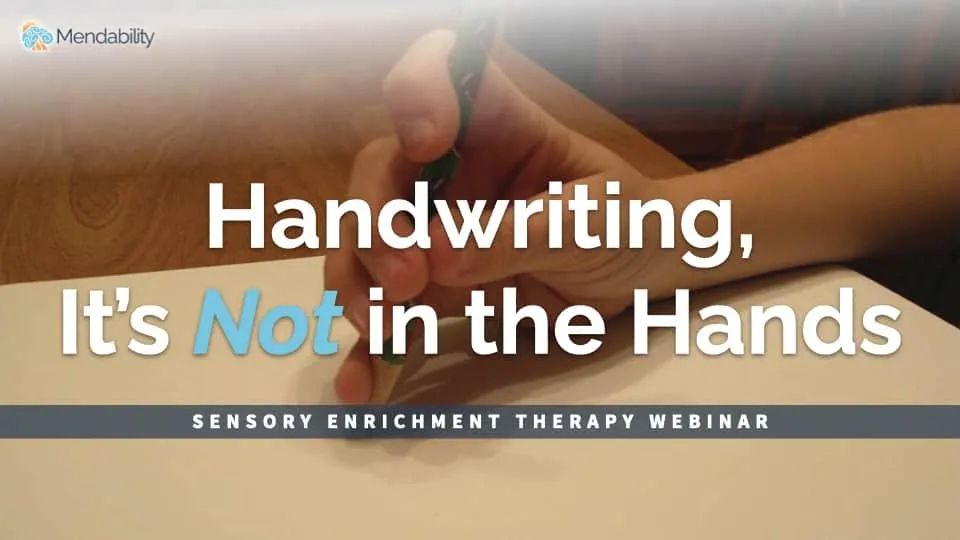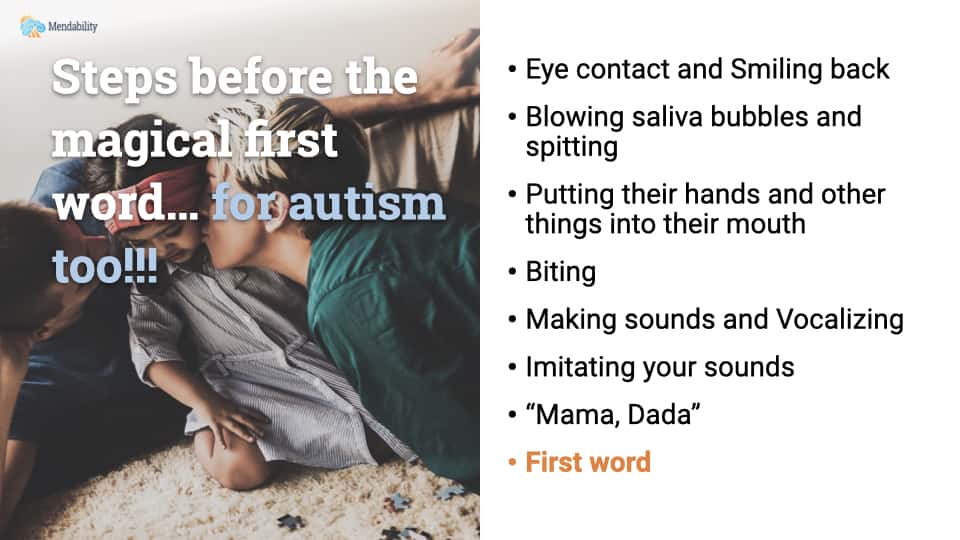
Activities for Autism: Outdoor Sticker Game
Stick it
This outdoor activity for your family member with autism involves matching colored dot stickers with colored X’s on objects around your yard.

Purpose:
This activity is easy for parents to set up and fun for children to do.
The Stick It game helps your child to organize their memory, understand patterns, and improve their ability to follow and retain instructions. It also develops fine motor skills and an understanding of colours.6
Your child will work on organized visual processing and experience a natural dopamine reward when they make a successful match. The X’s around your yard create new visual targets, and looking for them enhances your child’s eye-tracking.
Additionally, there is a strong connection between fine motor development and speech development. When your child lifts the stickers from the sheet they are using delicate fine motor actions which will improve their fine motor skills, which we have seen leading to improving their speech skills. We talk about this in more detail in this article: Sensory enrichment exercise: roll playdough snakes 5,2,4,1,3
You will need:
Sheets of dot-shaped stickers in four colors (often sold in office supply stores)
Electrical tape in matching colors
Setting up the activity:
Use the electrical tape to make X shapes on various items in your yard. For example, a red X on the patio table, a blue X on the fence, a green X on the patio chair, a yellow X on the umbrella.
What to do:
Give your child some stickers in each color and ask him to stick the right colors on the right objects. For example, the red dot goes on the red X on the fence.
Model and direct, then let him go and place stickers on the colored X’s around your yard.
Later, you can walk around the back yard with him to take off the stickers, so that you can start the game over the next day.
Additional ideas:
You can also try this game indoors, putting colored X’s on items around your house.
Try a soft toy variation of this game. Play with a basket of stuffed animals and tie a colored ribbon around the neck of each one. Ask your child to match the colored ribbon to sheets of colored paper that you have placed around the house or yard, putting the stuffed toys on the matching pieces of paper.
Additional reading:
Bhat AN, Landa RJ, Galloway JC. Current perspectives on motor functioning in infants, children, and adults with autism spectrum disorders. Physical therapy. 2011;91(7):1116–1129.
Choi B, Leech KA, Tager-Flusberg H, Nelson CA. Development of fine motor skills is associated with expressive language outcomes in infants at high and low risk for autism spectrum disorder. Journal of neurodevelopmental disorders. 2018;10(1):14.
Esposito G, Venuti P, Maestro S, Muratori F. An Exploration of symmetry in early autism spectrum disorders: analysis of lying. Brain & development. 2009;31(2):131–138.
Fournier KA, Hass CJ, Naik SK, Lodha N, Cauraugh JH. Motor coordination in autism spectrum disorders: a synthesis and meta-analysis. Journal of autism and developmental disorders. 2010;40(10):1227–1240.
Gernsbacher MA, Sauer EA, Geye HM, Schweigert EK, Hill Goldsmith H. Infant and toddler oral- and manual-motor skills predict later speech fluency in autism. Journal of child psychology and psychiatry, and allied disciplines. 2008;49(1):43–50.
Zachi EC, Costa TL, Barboni MTS, Costa MF, Bonci DMO, Ventura DF. Color Vision Losses in Autism Spectrum Disorders. Frontiers in psychology. 2017;8:1127.




